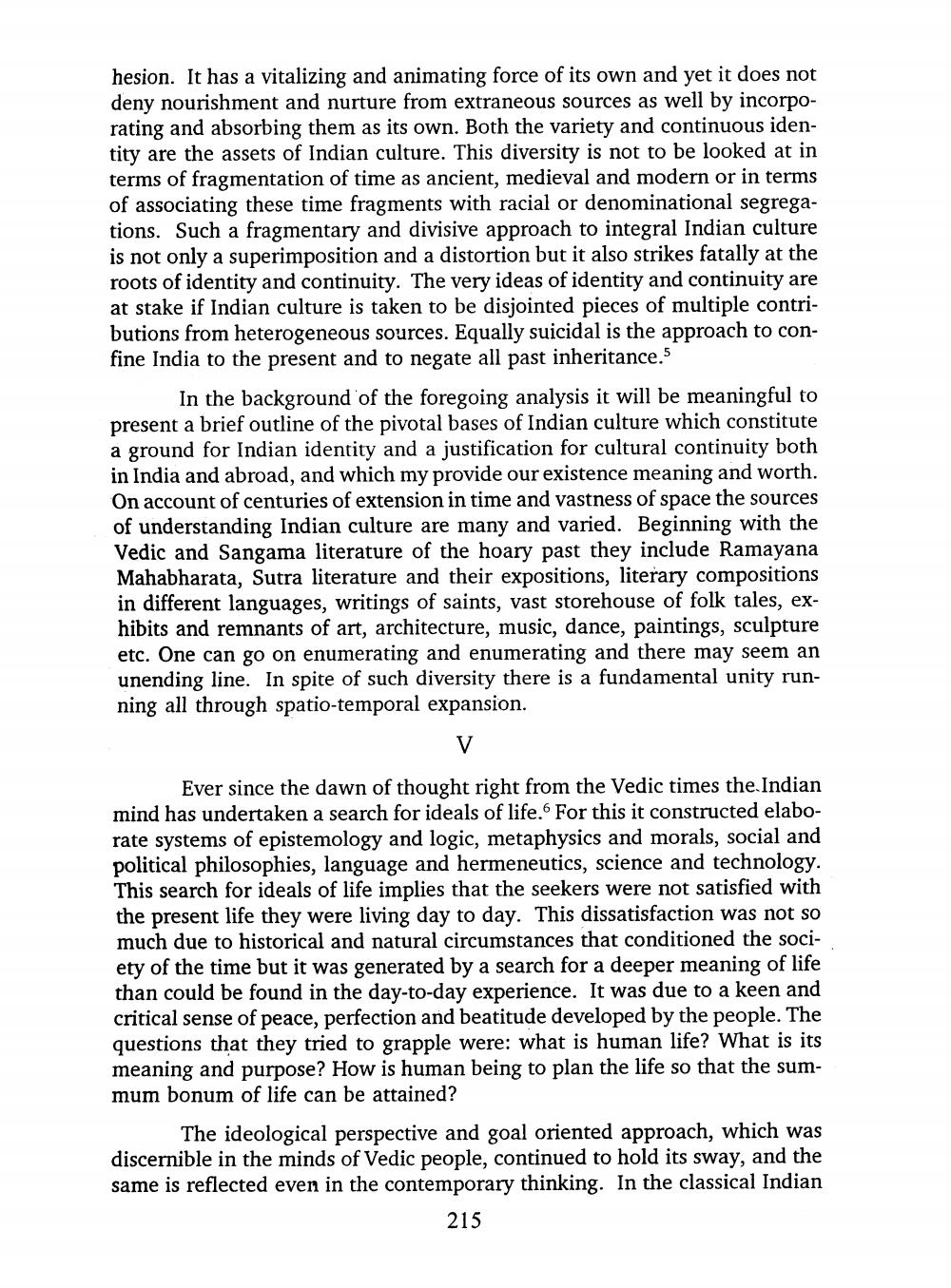________________
hesion. It has a vitalizing and animating force of its own and yet it does not deny nourishment and nurture from extraneous sources as well by incorporating and absorbing them as its own. Both the variety and continuous identity are the assets of Indian culture. This diversity is not to be looked at in terms of fragmentation of time as ancient, medieval and modern or in terms of associating these time fragments with racial or denominational segregations. Such a fragmentary and divisive approach to integral Indian culture is not only a superimposition and a distortion but it also strikes fatally at the roots of identity and continuity. The very ideas of identity and continuity are at stake if Indian culture is taken to be disjointed pieces of multiple contributions from heterogeneous sources. Equally suicidal is the approach to confine India to the present and to negate all past inheritance.3
In the background of the foregoing analysis it will be meaningful to present a brief outline of the pivotal bases of Indian culture which constitute a ground for Indian identity and a justification for cultural continuity both in India and abroad, and which my provide our existence meaning and worth. On account of centuries of extension in time and vastness of space the sources of understanding Indian culture are many and varied. Beginning with the Vedic and Sangama literature of the hoary past they include Ramayana. Mahabharata, Sutra literature and their expositions, literary compositions in different languages, writings of saints, vast storehouse of folk tales, exhibits and remnants of art, architecture, music, dance, paintings, sculpture etc. One can go on enumerating and enumerating and there may seem an unending line. In spite of such diversity there is a fundamental unity running all through spatio-temporal expansion.
V
Ever since the dawn of thought right from the Vedic times the.Indian mind has undertaken a search for ideals of life. For this it constructed elaborate systems of epistemology and logic, metaphysics and morals, social and political philosophies, language and hermeneutics, science and technology. This search for ideals of life implies that the seekers were not satisfied with the present life they were living day to day. This dissatisfaction was not so much due to historical and natural circumstances that conditioned the society of the time but it was generated by a search for a deeper meaning of life than could be found in the day-to-day experience. It was due to a keen and critical sense of peace, perfection and beatitude developed by the people. The questions that they tried to grapple were: what is human life? What is its meaning and purpose? How is human being to plan the life so that the summum bonum of life can be attained?
The ideological perspective and goal oriented approach, which was discernible in the minds of Vedic people, continued to hold its sway, and the same is reflected even in the contemporary thinking. In the classical Indian
215




